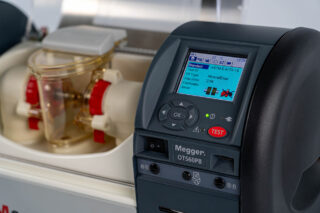The images have circulated all around the world. This Tuesday, the United Arab Emirates (UAE), a desert country, was hit by torrential rains. Over 120 millimeters of water fell on the Gulf State, equivalent to 2 years of precipitation, notably disrupting air traffic. The deluge also struck neighboring countries, Qatar, Bahrain, and Oman, where 20 people lost their lives. After the deluge, suspicions began to emerge. What if these rains were not of natural cause? The UAE have been practicing cloud seeding for several years. But what is cloud seeding exactly?
The videos of Dubai, a desert country with its feet in the water, and its airport at a standstill, stunned the entire world. While Dubai reported no casualties following the floods on Tuesday, April 16, in neighboring countries 20 people lost their lives.
How to explain these torrential rains and their intensity? Is it one of the causes of climate change? Or is it related to the cloud seeding policy practiced by the UAE? This method aims to create artificial rain in areas where it does not rain enough.
According to the country’s National Center of Meteorology, this technology, which is often used in the country to generate artificial rain, was not deployed this time because the storm “was already strong.”
What is Cloud Seeding?
But what exactly is this method of creating artificial rain? Our journalist Daniel Allen has worked on this subject, notably in China, a country that has been developing this technology for several decades.
“Seeding” clouds is a process that attempts to produce rain or snow by artificially adding condensation nuclei (e.g. silver iodide) to the atmosphere, providing a base on which snowflakes or raindrops can form.”
Silver Iodide is a compound that is commonly used in cloud seeding. It has a similar crystalline structure to ice, making it effective in promoting ice crystal formation within clouds. The substances are dispersed into the air using airplanes or rockets.
If published scientific literature shows no harmful effects from cloud seeding with silver iodide aerosols, there is a growing concern about pollution. Silver is indeed one of the most toxic heavy metals, particularly to aquatic life.
Scientists have therefore started to look for new and more environmentally friendly ways to induce precipitation.
New Solutions in the UAE
The United Arab Emirates (UAE) has been developing cloud-seeding technologies since the 1990s. According to this local website, the country is conducting around 300 missions every year.
The country has also funded research at the University of Reading in the UK, where meteorologists have developed a technology based on electricity to generate artificial rains.
They discovered that when cloud droplets have a positive or negative electrical charge, the smaller droplets will combine to form bigger raindrops. The size of the raindrops is critical, because in hot places such as the UAE, with an average annual rainfall of just 100mm, small drops normally evaporate before they reach the ground.
Our journalist contacted Dr. Keri Nicoll in 2021. At the time, he was coordinating the research. Here is what he said:
“What we are trying to do is to make the droplets inside the clouds big enough so that when they fall out of the cloud, they survive down to the surface.”
Catapult-launched, custom-built drones with a two-meter wingspan are now being tested in the UAE to deliver electric charges to clouds. These fly at low altitudes, with sensors measuring temperature, charge, and humidity.
READ MORE ABOUT CLOUD SEEDING
Is Cloud Seeding Efficient?
According to our journalist, despite decades of research, it is still complicated to determine if cloud seeding is really efficient. This is partly because analyzing the efficacy of this technique is a hugely challenging proposition.
He talked to Bart Geerts, Professor of Atmospheric Science at the University of Wyoming who told him:
“You need decades of storm data to statistically assess impact, and funding agencies (private or government) simply can’t afford to wait that long.”
So, is cloud seeding really responsible for the rains in Dubai? A more possible explanation is climate change. According to the scientific journal Nature, precipitation in the UAE is expected to increase by 15 to 30% in the years to come.










